-
 bitcoin
bitcoin $109667.069529 USD
-3.03% -
 ethereum
ethereum $3936.685804 USD
-4.07% -
 tether
tether $1.000493 USD
0.01% -
 xrp
xrp $2.771823 USD
-4.74% -
 bnb
bnb $957.805027 USD
-5.34% -
 solana
solana $196.735100 USD
-6.68% -
 usd-coin
usd-coin $0.999727 USD
-0.01% -
 dogecoin
dogecoin $0.227355 USD
-5.12% -
 tron
tron $0.335205 USD
-0.81% -
 cardano
cardano $0.779256 USD
-3.59% -
 ethena-usde
ethena-usde $0.999900 USD
-0.06% -
 hyperliquid
hyperliquid $42.492095 USD
-6.61% -
 chainlink
chainlink $20.501853 USD
-4.34% -
 avalanche
avalanche $28.952606 USD
-11.21% -
 stellar
stellar $0.356038 USD
-3.93%
What is decentralized finance?
DeFi leverages blockchain and smart contracts to offer open, permissionless financial services like lending, trading, and earning yield—without intermediaries.
Sep 17, 2025 at 09:00 am
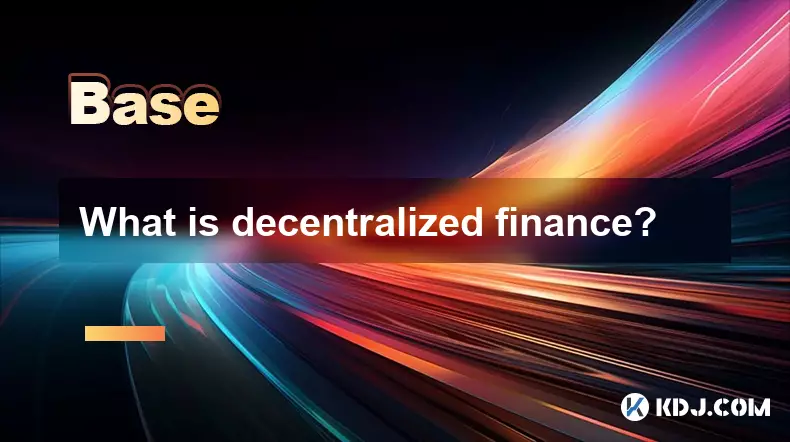
Understanding Decentralized Finance
1. Decentralized finance, commonly known as DeFi, refers to a financial ecosystem built on blockchain technology that operates without central intermediaries such as banks or brokers. It enables users to access financial services like lending, borrowing, trading, and saving through decentralized applications (dApps) running primarily on smart contract platforms like Ethereum.
2. The core principle of DeFi is permissionless access. Anyone with an internet connection and a digital wallet can participate, regardless of geographic location or socioeconomic status. This inclusivity challenges traditional financial gatekeeping and expands financial opportunities to underserved populations.
3. Smart contracts serve as the backbone of DeFi protocols. These self-executing agreements automatically enforce rules and facilitate transactions when predefined conditions are met, reducing the need for trust in counterparties and minimizing human intervention.
4. DeFi platforms often use cryptocurrencies as collateral. Users can deposit digital assets into liquidity pools to earn interest or enable others to borrow against them. This creates a dynamic, interconnected network of financial instruments that operate transparently on public ledgers.
5. Unlike traditional finance, where systems are siloed and slow to innovate, DeFi encourages composability. Protocols are designed to integrate seamlessly with one another, allowing developers to build complex financial products by combining existing tools—often referred to as 'money legos.'
Key Components of DeFi Ecosystems
1. Decentralized exchanges (DEXs) allow users to trade cryptocurrencies directly from their wallets without relying on a centralized intermediary. Examples include Uniswap and SushiSwap, which use automated market maker (AMM) models to provide liquidity.
2. Lending and borrowing platforms such as Aave and Compound enable users to supply assets and earn yield or take out loans by posting collateral. Interest rates are determined algorithmically based on supply and demand dynamics within the protocol.
3. Stablecoins play a crucial role in reducing volatility within DeFi. Tokens like DAI and USDC are pegged to fiat currencies and provide a reliable medium of exchange and store of value across various applications.
4. Yield farming and liquidity mining incentivize users to provide liquidity to protocols in exchange for token rewards. These mechanisms help bootstrap network participation and distribute governance rights among users.
5. Oracles bridge blockchain networks with real-world data. Services like Chainlink supply external price feeds that DeFi applications rely on to function accurately, especially for collateral valuation and liquidation triggers.
Risks and Challenges in DeFi
1. Smart contract vulnerabilities pose significant risks. Code flaws or exploits can lead to substantial financial losses, as seen in high-profile hacks targeting protocols like Poly Network and Cream Finance.
2. Impermanent loss affects liquidity providers when the price ratio of deposited assets changes significantly. This risk is inherent in AMM-based DEXs and requires careful consideration before participating in liquidity pools.
3. Regulatory uncertainty looms over the DeFi space. Governments are increasingly scrutinizing decentralized platforms, raising concerns about compliance, taxation, and potential restrictions on anonymous financial activities.
4. User error remains a major issue. Misconfigured transactions, phishing attacks, and loss of private keys can result in irreversible fund loss, highlighting the importance of security education and best practices.
5. Network congestion and high gas fees on popular blockchains like Ethereum can hinder accessibility, especially for small-scale participants. Layer 2 solutions and alternative chains aim to address these scalability challenges.
Frequently Asked Questions
What distinguishes DeFi from traditional banking?DeFi eliminates centralized control and intermediaries by using blockchain-based smart contracts. Users retain full custody of their funds and interact directly with protocols, enabling faster, more transparent, and globally accessible financial services.
Can DeFi operate without cryptocurrencies?
No. Cryptocurrencies are essential for DeFi operations, serving as collateral, transaction fees, and incentives. Without digital assets, the economic model and functionality of DeFi platforms would collapse.
How do users earn returns in DeFi?
Returns are generated through mechanisms like lending interest, liquidity provision rewards, yield farming incentives, and staking. These earnings are typically paid in tokens and vary based on market conditions and protocol design.
Are DeFi transactions reversible?
No. Once a transaction is confirmed on the blockchain, it cannot be reversed. This immutability ensures security but also means users must exercise extreme caution when executing trades or sending funds.
Disclaimer:info@kdj.com
The information provided is not trading advice. kdj.com does not assume any responsibility for any investments made based on the information provided in this article. Cryptocurrencies are highly volatile and it is highly recommended that you invest with caution after thorough research!
If you believe that the content used on this website infringes your copyright, please contact us immediately (info@kdj.com) and we will delete it promptly.
- Hashdex, Crypto ETFs, XRP & Solana: A New Era for Digital Asset Investing
- 2025-09-26 18:25:12
- Crypto Market Slowdown? Year-End Rally Still in Play!
- 2025-09-26 18:25:12
- XRP, RLUSD, and the Derivatives Market: A New York Minute on Crypto's Next Big Thing
- 2025-09-26 18:45:15
- Bitcoin Price Under Pressure: Is $105,000 Still in Play?
- 2025-09-26 19:05:14
- Pepeto's Presale Surge: Riding the PEPE Success Wave?
- 2025-09-26 19:05:14
- Pepeto vs. Shiba Inu vs. PEPE: The Next Meme Coin Millionaire Maker?
- 2025-09-26 19:10:01
Related knowledge
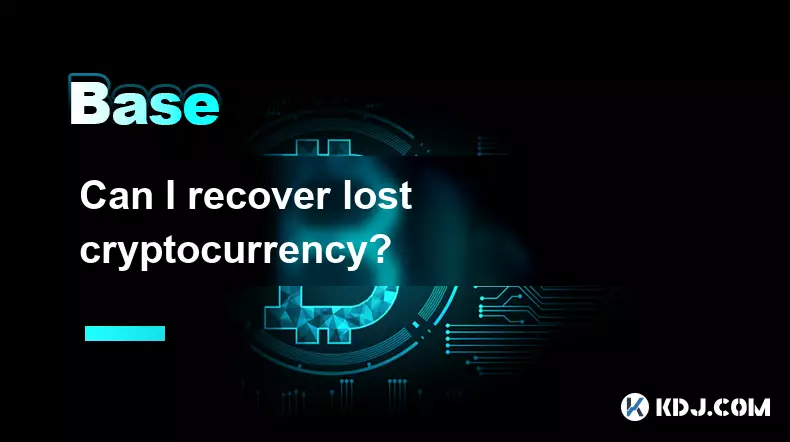
Can I recover lost cryptocurrency?
Sep 25,2025 at 08:18am
Understanding the Nature of Cryptocurrency Loss1. Cryptocurrency operates on decentralized networks, meaning there is no central authority to reverse ...
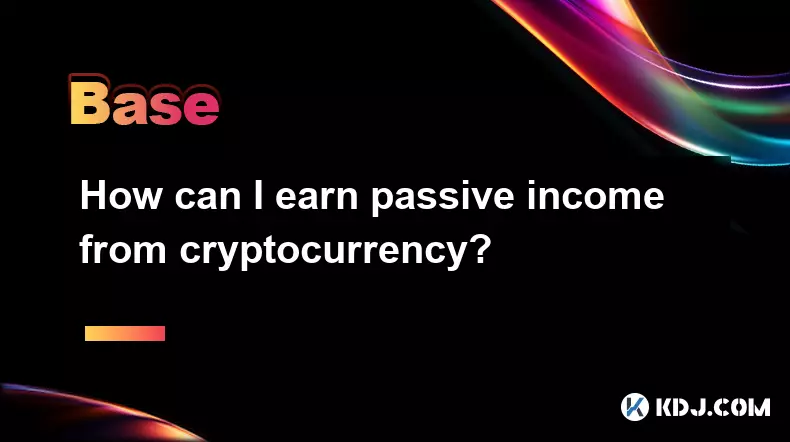
How can I earn passive income from cryptocurrency?
Sep 23,2025 at 10:18am
Staking Cryptocurrencies for Regular Returns1. Many blockchain networks operate on a proof-of-stake (PoS) consensus mechanism, allowing users to earn ...

What are gas fees in cryptocurrency transactions?
Sep 26,2025 at 02:00am
Understanding Gas Fees in Blockchain Transactions1. Gas fees are payments made by users to compensate for the computing energy required to process and...
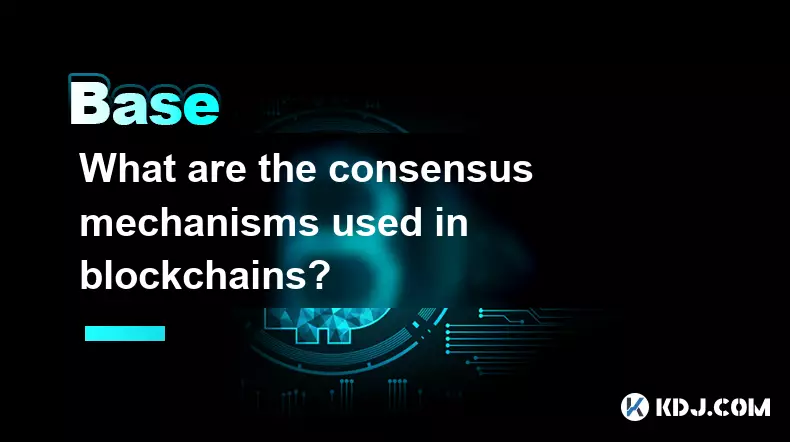
What are the consensus mechanisms used in blockchains?
Sep 24,2025 at 10:00am
Proof of Work and Its Role in Blockchain Security1. Proof of Work (PoW) is one of the earliest consensus mechanisms, first implemented by Bitcoin. Min...
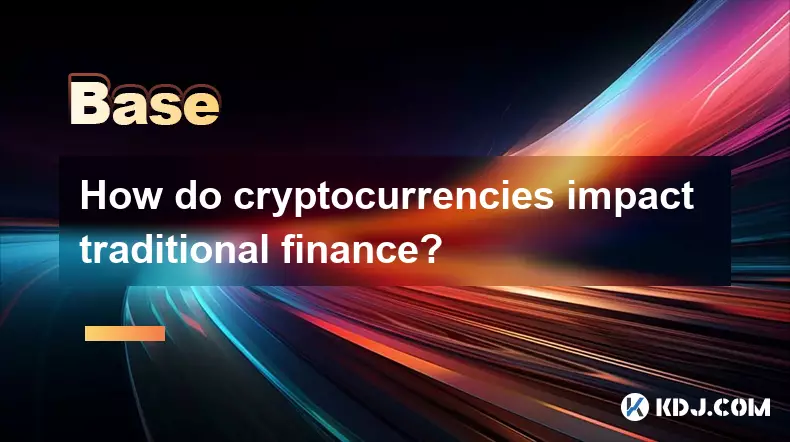
How do cryptocurrencies impact traditional finance?
Sep 26,2025 at 05:54am
Disruption of Centralized Banking Systems1. Cryptocurrencies challenge the authority of central banks by offering decentralized alternatives to fiat c...

Is there a finite supply of Bitcoin?
Sep 23,2025 at 06:00am
Bitcoin's Fixed Supply Mechanism1. Bitcoin was designed with a hard cap of 21 million coins, making its supply finite and predictable. This limit is h...

Can I recover lost cryptocurrency?
Sep 25,2025 at 08:18am
Understanding the Nature of Cryptocurrency Loss1. Cryptocurrency operates on decentralized networks, meaning there is no central authority to reverse ...

How can I earn passive income from cryptocurrency?
Sep 23,2025 at 10:18am
Staking Cryptocurrencies for Regular Returns1. Many blockchain networks operate on a proof-of-stake (PoS) consensus mechanism, allowing users to earn ...

What are gas fees in cryptocurrency transactions?
Sep 26,2025 at 02:00am
Understanding Gas Fees in Blockchain Transactions1. Gas fees are payments made by users to compensate for the computing energy required to process and...

What are the consensus mechanisms used in blockchains?
Sep 24,2025 at 10:00am
Proof of Work and Its Role in Blockchain Security1. Proof of Work (PoW) is one of the earliest consensus mechanisms, first implemented by Bitcoin. Min...

How do cryptocurrencies impact traditional finance?
Sep 26,2025 at 05:54am
Disruption of Centralized Banking Systems1. Cryptocurrencies challenge the authority of central banks by offering decentralized alternatives to fiat c...

Is there a finite supply of Bitcoin?
Sep 23,2025 at 06:00am
Bitcoin's Fixed Supply Mechanism1. Bitcoin was designed with a hard cap of 21 million coins, making its supply finite and predictable. This limit is h...
See all articles










































































